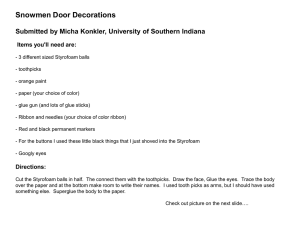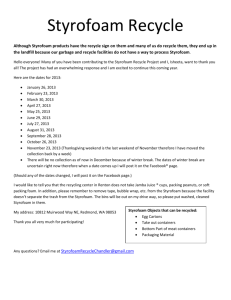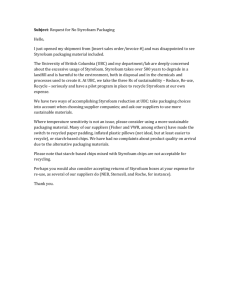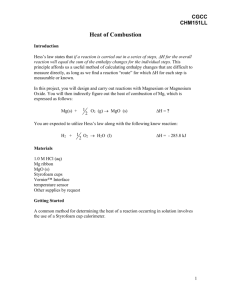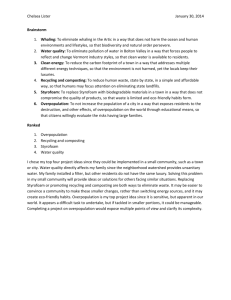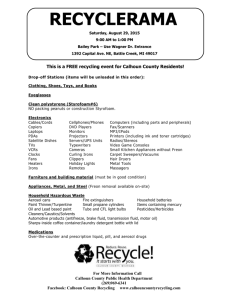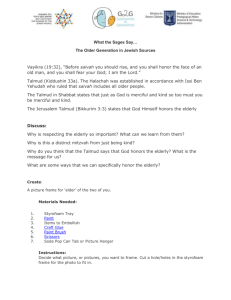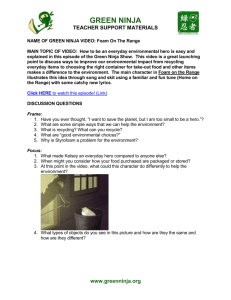1 Page Fact Sheet - Zero Waste Kauai .net
advertisement
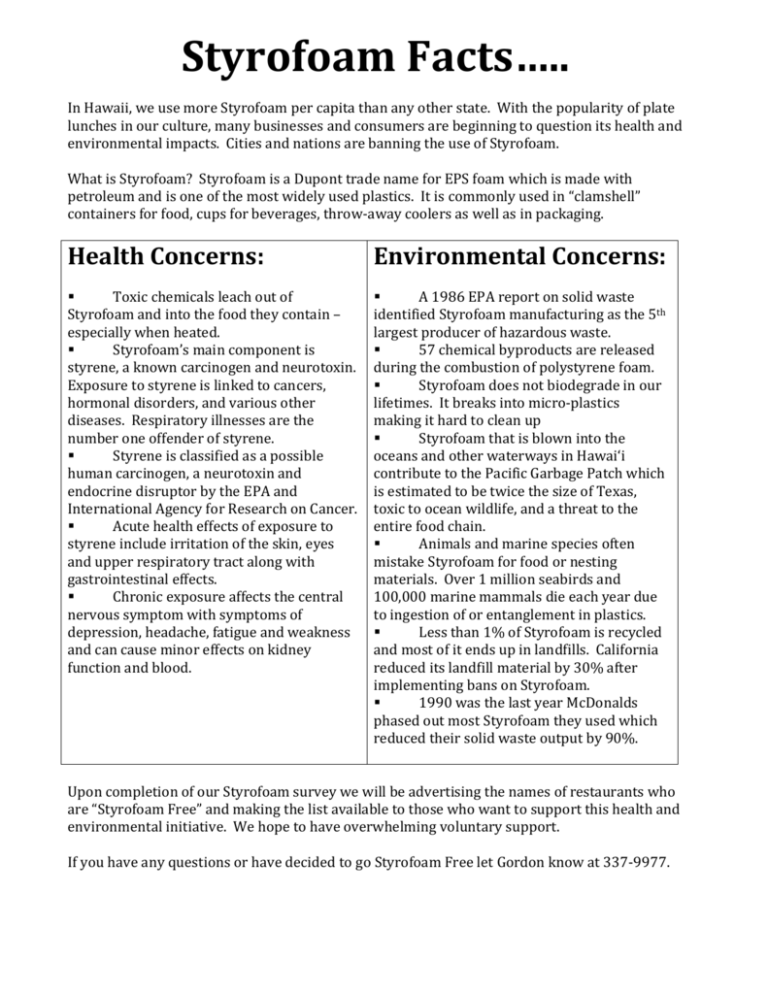
Styrofoam Facts….. In Hawaii, we use more Styrofoam per capita than any other state. With the popularity of plate lunches in our culture, many businesses and consumers are beginning to question its health and environmental impacts. Cities and nations are banning the use of Styrofoam. What is Styrofoam? Styrofoam is a Dupont trade name for EPS foam which is made with petroleum and is one of the most widely used plastics. It is commonly used in “clamshell” containers for food, cups for beverages, throw-away coolers as well as in packaging. Health Concerns: Environmental Concerns: Toxic chemicals leach out of Styrofoam and into the food they contain – especially when heated. Styrofoam’s main component is styrene, a known carcinogen and neurotoxin. Exposure to styrene is linked to cancers, hormonal disorders, and various other diseases. Respiratory illnesses are the number one offender of styrene. Styrene is classified as a possible human carcinogen, a neurotoxin and endocrine disruptor by the EPA and International Agency for Research on Cancer. Acute health effects of exposure to styrene include irritation of the skin, eyes and upper respiratory tract along with gastrointestinal effects. Chronic exposure affects the central nervous symptom with symptoms of depression, headache, fatigue and weakness and can cause minor effects on kidney function and blood. A 1986 EPA report on solid waste identified Styrofoam manufacturing as the 5th largest producer of hazardous waste. 57 chemical byproducts are released during the combustion of polystyrene foam. Styrofoam does not biodegrade in our lifetimes. It breaks into micro-plastics making it hard to clean up Styrofoam that is blown into the oceans and other waterways in Hawai‘i contribute to the Pacific Garbage Patch which is estimated to be twice the size of Texas, toxic to ocean wildlife, and a threat to the entire food chain. Animals and marine species often mistake Styrofoam for food or nesting materials. Over 1 million seabirds and 100,000 marine mammals die each year due to ingestion of or entanglement in plastics. Less than 1% of Styrofoam is recycled and most of it ends up in landfills. California reduced its landfill material by 30% after implementing bans on Styrofoam. 1990 was the last year McDonalds phased out most Styrofoam they used which reduced their solid waste output by 90%. Upon completion of our Styrofoam survey we will be advertising the names of restaurants who are “Styrofoam Free” and making the list available to those who want to support this health and environmental initiative. We hope to have overwhelming voluntary support. If you have any questions or have decided to go Styrofoam Free let Gordon know at 337-9977.
